I have a question with regards to WPF bindings.
I cannot find clear explanations of how it works. Sure, the Microsoft docs webpage provides a lot of information, but this documentation does not clarify a lot for me. After reading the documentation I go back to my code with the conclusion that WPF bindings are too complicated and that I try to make due using event handlers instead.
I believe that I don't have to go through the hassle of using event handlers and all, and I believe that WPF databingings would improve my code a lot, making it more elegant and simple. Yet, up until now, I haven't been able to find a simple explanation and I haven't been able to get it working without just copy-pasting big pieces of code from the internet. Code I do not understand.
I've tried lots of StackOverflow posts and youtube videos but not much seems to work.
Let me show you what I'm trying to do. I have a wheel (cog) that I want to rotate. I want to manipulate that rotation programmatically. For the sake of the example, I will increase a rotation angle by one degree every second.
When I stop the debugger in the incrementation loop, I can see that the variable that holds the rotation angle has a value, that increases over time. I can also see that, when I hover over that property (variable) in the XAML part of the code, this property does have the correct value. The issue is that my UI element, that wheel I made, does not rotate.
Can anyone tell me what I'm doing wrong here? And does anyone have suggestions or sources when I can find a good explanation of how to use bindings in WPF?
Thanks in advance.
My code:
MainWindow.xaml
<Window x:Class="PropertyBindingWPF.MainWindow"
xmlns="http://schemas.microsoft.com/winfx/2006/xaml/presentation"
xmlns:x="http://schemas.microsoft.com/winfx/2006/xaml"
xmlns:d="http://schemas.microsoft.com/expression/blend/2008"
xmlns:mc="http://schemas.openxmlformats.org/markup-compatibility/2006"
xmlns:local="clr-namespace:PropertyBindingWPF"
mc:Ignorable="d"
Title="MainWindow" Height="250" Width="400">
<Grid>
<StackPanel>
<Canvas>
<Canvas Name="Wheel"
Canvas.Top="80"
Canvas.Left="150"
RenderTransformOrigin=".5 .5"
Width="100"
Height="100">
<Canvas.RenderTransform>
<RotateTransform Angle="{Binding Path=CogRotationAngle}"/>
</Canvas.RenderTransform>
<Ellipse Width="90"
Height="90"
StrokeThickness="2"
Stroke="Black"
Fill="White"
Canvas.Top="5"
Canvas.Left="5"/>
<Ellipse Width="3"
Height="3"
StrokeThickness="2"
Stroke="Blue"
Canvas.Left="48.5"
Canvas.Top="10"/>
</Canvas>
</Canvas>
</StackPanel>
</Grid>
</Window>
MainWindow.xaml.cs
using System.Windows;
using System.Threading;
namespace PropertyBindingWPF
{
public partial class MainWindow : Window
{
public int CogRotationAngle { get; set; }
public MainWindow()
{
InitializeComponent();
DataContext = this;
Thread loop = new Thread(LoopThread);
loop.Start();
}
private void LoopThread()
{
while (true)
{
CogRotationAngle++;
if (CogRotationAngle >= 360) CogRotationAngle = 0;
Thread.Sleep(1000);
}
}
}
}
